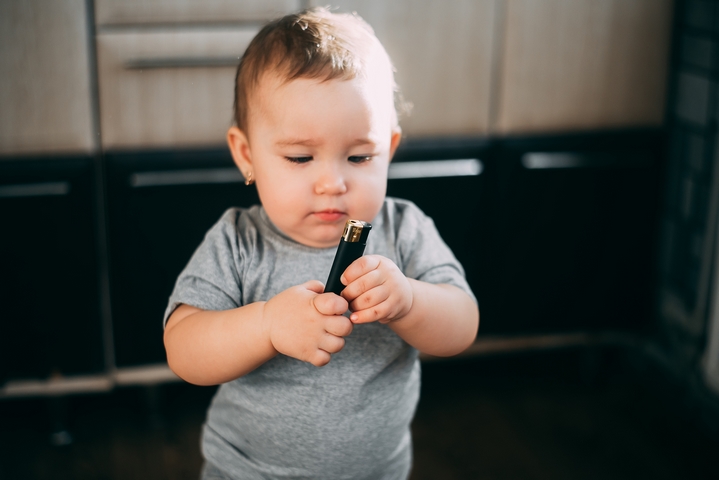A fire can bring down a home in just a few minutes. It often results in loses through damage of property worth thousands of dollars and may also end up harming your loved ones. Sure, insurance may cover the financial expenses incurred as a result of the damage by the fire, but it’s far much better to address the causes of house fires.
Some common causes of house fires may be electrical or chemical in nature. However, ordinary objects we use every day are also possible triggers for the causes of house fires.
Below are the top eight causes of house fires for homeowners to know:
1. Cooking Equipment

Of all the causes of house fires, this is the most common with statistics provided by the National Fire Protection Association putting it at 22.6%, followed by other causes at lower percentages. Pots or pans may overheat and in the process splash grease, which is highly flammable when hot. When ignited, this could easily set your kitchen ablaze.
At some point, you have most likely left food cooking in the kitchen, unattended. Forgetting there’s food cooking in the kitchen is a common occurrence, and many fires are caused by burning food. Never leave the kitchen until you are done with cooking, especially when using high temperatures or oil. Also, remember to keep flammable materials such as dish towels away from heat sources and thoroughly clean cookware to prevent grease build up.
2. Electrical Equipment

According to the National Fire Protection Association, electrical equipment accounts for 9.4% of all significant causes of house fires. They can cause fires when faulty, loose, or if the cords are worn out. You might also want to avoid having too many adapters plugged into one power point.
Having electric wires running under heavy furniture and using a worn out extension cord could also expose you to fire risks. Unless you are a licensed electrician, avoid do-it-yourself escapades, especially if they have to do with an electrical appliance. Regular maintenance checks are also highly advised.
3. Heating Equipment

Heating equipment such as home and portable electric heaters should be appropriately monitored. Keep these appliances at least one metre from any combustible materials and be extra careful when using fuels as they may catch fire and blow up. If you must use heating equipment, you should also equip your home with proper heat resistant equipment and materials in case of emergency.
Never use heaters to dry shoes or clothes. Confirm the heating device is in working condition before using it and follow the instructions to the letter. It’s also essential to install a carbon monoxide alarm to detect deadly carbon monoxide gas.
4. Smoking

Other than the dangerous health effects tobacco inflicts on your body, it can also be one of the biggest causes of house fires. If you have to, ensure you smoke while outside the house or use a deep ashtray to ensure no embers fall to the ground since they can smoulder for hours before setting your furniture on fire. The bedroom should be a smoke-free environment.
When smoking indoors, keep the ashtray away from combustible material. Interesting fact: bedroom or lounge fires make up 73% of all house fire fatalities. Yeah, now you know.
5. Candles

Candles seem pretty harmless, right? However, when left unattended, they can cause damaging fires. Keep candles in a well-built holder in a levelled-out surface and away from combustible materials and from children. Another interesting fact: in 2012, 34 house fires in Perth were attributed to candles.
6. Children Playing

Heard of the phrase ‘curiosity killed the cat’? Well, it has never been more accurate. Children often play with dangerous objects just to see what would happen in case they set it on fire, and sometimes they end up sustaining injuries. Keep matches or lighters out of the reach of children.
You can also take precautionary measures by practicing a home escape plan with your children and family in case of a fire break out. Ensure your children understand the “stop, drop, cover and roll” technique. Make sure they know their address should they have to call 000.
7. Christmas Trees and Decorations

To most people, Christmas is never complete without a Christmas tree. However, these trees pose tremendous fire risks. While real trees tend to dry out over time and can be ignited by just a small spark, fake trees are much safer. However, a fire can also occur if the electrical power point is faulty.
Whether real or fake, never leave a Christmas tree lit when you are not around. Besides, make sure all the lights are working correctly and keep the tree away from heat sources such as TV sets, furnace ducts, and radiators.
8. Flammable Liquids

Liquids such as methylated spirits, petrol, thinners, cleaning agents, paints, adhesives, solvents and other raw materials should be appropriately stored, ideally outside the home in a cool and well-ventilated area, in appropriate containers, and away from heat sources as they can easily ignite.
Take the initiative to follow these fire safety guidelines and create a safe environment for yourself and your family.

